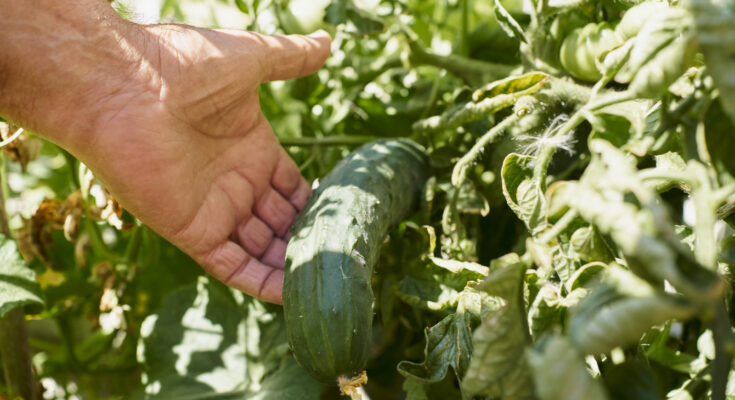The Long-Blooming Companion That’ll Help You Grow The Best Cucumbers In Your Garden
Sweet alyssum (Lobularia maritima) is a flowering plant that can help add depth to your garden, but it’s the benefit it offers to cucumber plants that makes it a popular choice for some gardeners. As a companion to cucumbers, planting it encourages pollinator visits, ensuring your crops are well-pollinated for a good, rich yield. This annual entices parasitoid wasps and syrphid flies as a form of natural pest control for aphids, as well as other garden irritants that target cucumbers. Adding this companion plant next to your cucumbers is an excellent way to reduce your reliance on heavy pesticides while also contributing to a healthy garden ecosystem.
With its tiny but showy white flowers dotting your garden bed, sweet alyssum is a lovely plant for bordering your cucumbers. Its blooms have a honey fragrance and feature shallow nectar areas that are easy for small, beneficial insects to reach. The appearance of sweet alyssum’s flowers can be described as fluffy, growing wildly to the point where a carpet of blooms completely obscures the foliage, earning it the nickname “carpet flower.” It’s an ideal ground cover and easy to grow. Here’s how you can add it to your garden and enjoy a hearty harvest of cucumbers, thanks to its benefits.
How to grow sweet alyssum for your cucumbers
You can start your sweet alyssum from seed, provided you plant it in the garden after spring’s last frost date. It grows well outdoors but you can also start seeds indoors six to eight weeks before you plant. Try planting it at the same time you start your cucumber plants from seed in your garden, so the sweet alyssum will be in full bloom within six to eight weeks, vigorously drawing in pollinators. Be sure you keep the soil layer minimal over the seeds, as they need light for germination. Until germination begins, the soil should be moist. After transplanting, space your plants 6 to 12 inches apart to reduce crowding.
Sweet alyssum prefers full sun but also tolerates partial shade, particularly if in a warmer climate. It needs a minimum of six hours of full sunlight daily for its best growth. Plant in moist, well-drained soil, letting the soil dry between waterings. After it’s established, your plant needs about 1 inch of water weekly. Growing about 3 to 6 inches from seed, and spreading up to 12 inches wide, the plant will be a beautiful addition to your garden. You can encourage continuous growth by deadheading flowers.
Tips for caring for sweet alyssum
Thanks to its minor pest and disease concerns, sweet alyssum is great when planted with vegetables in your garden (or botanically, in the case of cucumber, a fruit). While it is low-maintenance, disease concerns include downy mildew and root rot, both of which can result from waterlogged soil. It’s also deer-resistant, so you don’t have to worry about them munching on your flowers. Pest control worries are pretty minor as well, with the only major concern the aster leafhopper.
During periods of warmer temperatures, sweet alyssum may temporarily cease flower growth, bouncing back when cooler weather sets in again. You can lightly shear the blooms and continue watering as needed to help with their revival. Overall, sweet alyssum is a great addition to pollinator gardens as well as helping your vegetable patch, thanks to its ability to self-sow. Its growth continues year after year with good maintenance. While white is a popular color, and certainly offers beauty to your space, you can seek out purple or pink cultivars if you want to add a splash of color.
